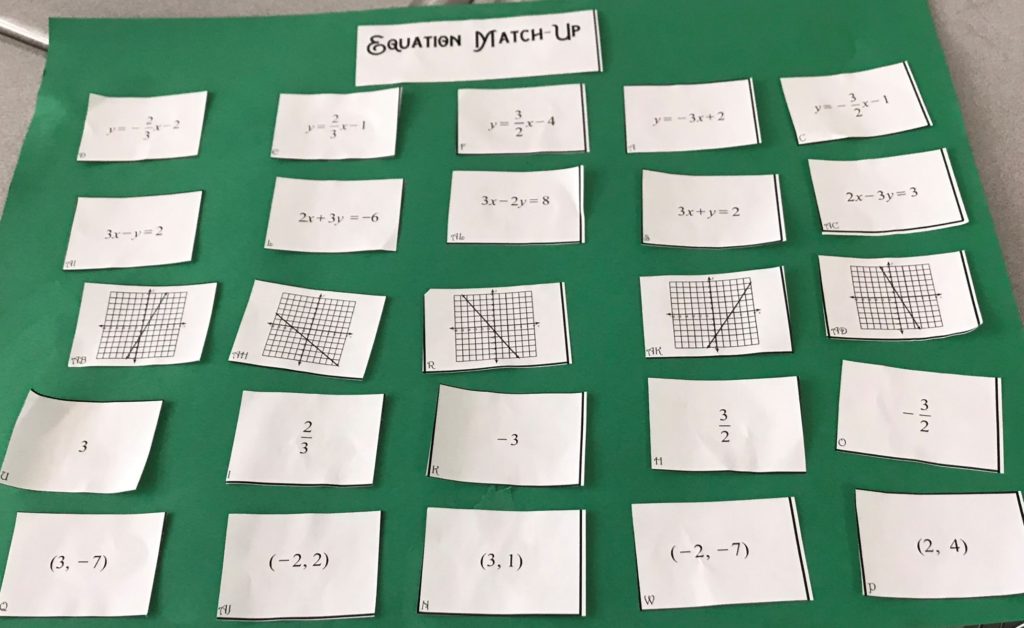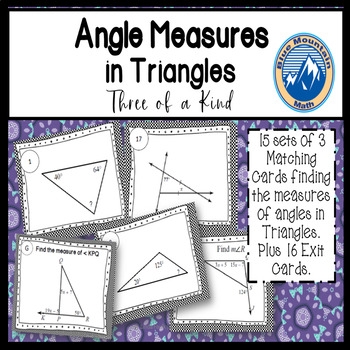When I was a first year teacher, my first activity with the class was a sorting activity aka, matching cards. Students found it engaging and I was surprised to see how easy it was to implement and use.

Since then, using matching card activities in the classroom is a regular occurrence. Using sorting activities offer several opportunities.
Using Sorting Cards Offers Visual Cues to Mathematical Relationships
Some concepts in mathematics are difficult to explain but a picture will simplify. Piecewise functions are confusing, even the notation is confusing for most students. But pairing a picture with an example helps clarify it.

Using Sorting Cards Gives Students Practice in Using Vocabulary
Math vocabulary is difficult for many students. It is like learning a new language and they need repetitive practice to remember and improve. Cards that match vocabulary words to meanings as well as cards that match vocabulary words to a visual can help students remember.

Using Sorting Cards Increases Student Conversations
When students are working together to complete any activity they are practicing vocabulary and learning from each other. They have the chance to practice explanations in a safe environment with support from a peer. Assessments require more explanations of student thinking and this will help prepare them.
Sorting Cards Can Be Used in Many Ways
The most obvious use for sorting cards is to use as a collaborative activity, whether it is in small groups or pairs. And if you did nothing else but this, students would still get the benefits of the activity. But they can also be used in other ways.
Use as a Ticket In/Out the Door
Using a set of matching cards as a mini-assessment from a recent lesson will not only give you feedback on how students are progressing but also serve as a quick review. Students need to see concepts presented in different ways that they learned it from the original lesson. They need this extension to increase understanding.
Research says that students need repeated practice over time to impact long term memory. Many teachers use spiral activities to review past lessons frequently.
Use as a Station Activity
Students can rotate to different stations to complete pairing the cards. I like to use several sets of cards and put 6-8 pairs at each station. It is also fun to include a non-matching card at each station as well. This way students have to carefully consider the pairing when they have a leftover card.
Whole Class Activity
Either project a card and have students write the answer to the card. Or you can place copies of half the card (the answers) in a box and when students see the question (or graph, or equation, or work), they go to the box to pull out the correct answer. I have used this with polynomials to help students remember all the vocabulary.

Line-Up Activity
I have used this strategy when teaching scientific notation. Pass out the cards and ask students to line up from least to greatest. Instead of checking their placement, ask students to check with students to the right and left of where they are standing. This works well with slope, radicals and fractions as well as any problem that requires a numeric answer.
Students get the added benefit of talking to each other about their problems, comparing their answers and this helps reinforce concepts. Students learn from other students in a different way than from the teacher.
Sort Students into Pairs
Pass out all the cards and ask students to find their match. This gives students a chance to work with different students and is a quick assessment of their understanding of previous concepts. Once students have their match, they can sort the rest of the cards or do a different activity.
Sort the Class into Two Teams
Sometimes, I need two teams for a whiteboard showdown. Pass out cards and those with the problem are on one team, those with the answer are on the other team. Once in teams, pair the students to challenge each other using the problem/answer pairs of cards.
Speed Dating Activity
Pass out all the problem cards. Students form two rows, one row is stationery and the students in the other row moves one seat each time. Each student takes turn explaining their problem to the other student. I like to use a recording sheet with this so students record the explanations.
Create a Poster
Use the cards either in groups or pairs and have students make a poster of the matched cards. Then you can use the posters as anchor charts or as gallery walks on another day.

When posters are created in the classroom and displayed, students can view and remember the activity. It gives reminders of those concepts and helps reinforce the math. Read more about gallery walks at a previous blog post here.
When I return to class each school year, I spend the first day preparing task cards, matching card sets, puzzles and other activities. I get out the laminator and prepare many of the activities I use and each year I add to the stack. This comes in handy if there is an emergency, I am called to a meeting at the last minute, the internet is out or…..fill in the blank.
Knowing that there is something always prepared relieves some stress. For a list of resources available, click the link below the image.











Leave a Reply